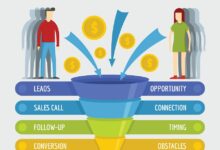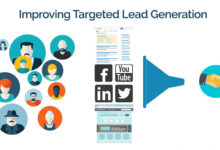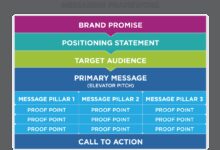Lead Generation: 7 Proven Strategies to Skyrocket Your Sales
Lead generation isn’t just about collecting names—it’s about building relationships that convert. In today’s competitive digital landscape, mastering lead generation can be the game-changer your business needs to grow sustainably and profitably.
What Is Lead Generation and Why It Matters

At its core, lead generation is the process of attracting and converting strangers into potential customers who have shown interest in your product or service. It’s the first critical step in the sales funnel and sets the foundation for long-term customer relationships.
Defining a Lead
A lead is any individual or organization that has provided contact information and demonstrated interest in what you offer. This could be through filling out a form, downloading a resource, or subscribing to a newsletter. Not all leads are equal—some are more qualified than others based on their behavior and intent.
Marketing Qualified Lead (MQL): A lead deemed more likely to become a customer based on engagement metrics.Sales Qualified Lead (SQL): A lead that sales teams have evaluated and believe is ready for direct outreach.Product Qualified Lead (PQL): Common in SaaS businesses, this lead has used the product (e.g., free trial) and shown signs of conversion potential.”Lead generation is not about chasing numbers—it’s about attracting the right people at the right time with the right message.” — Neil Patel, Digital Marketing ExpertThe Role of Lead Generation in Business GrowthWithout a steady stream of leads, even the best products can fail.Lead generation fuels sales pipelines, supports marketing ROI, and enables scalable growth.
.According to HubSpot, companies that excel at lead generation grow 2.5x faster than their peers (HubSpot Sales Statistics)..
Effective lead generation aligns marketing and sales teams, improves customer acquisition cost (CAC), and increases lifetime value (LTV). It’s not a one-off campaign but an ongoing strategy embedded in every customer touchpoint.
Types of Leads: From Cold to Hot
Understanding the different types of leads helps businesses tailor their approach and improve conversion rates. Not every lead should be treated the same—segmentation is key.
Cold Leads
Cold leads are individuals or businesses with little to no prior interaction with your brand. They may have been acquired through purchased lists, cold outreach, or broad advertising. While they represent potential, they require significant nurturing before they’re ready to buy.
Strategies for engaging cold leads include educational content, retargeting ads, and lead magnets like free guides. The goal is to build trust and awareness gradually.
Warm Leads
Warm leads have interacted with your brand in some way—visited your website, attended a webinar, or downloaded a whitepaper. They’re more receptive to communication because there’s already a level of familiarity.
Email nurturing sequences, personalized recommendations, and targeted offers work well with warm leads. Tools like ActiveCampaign help automate these workflows efficiently.
Hot Leads
Hot leads are actively looking to make a purchase. They might have requested a demo, added items to a cart, or contacted customer support. These leads require immediate follow-up and a seamless buying experience.
Speed matters: research by InsideSales shows that the odds of qualifying a lead drop by 10x if contacted after 5 minutes (InsideSales Research). Implementing live chat, instant notifications, and CRM alerts can drastically improve hot lead conversion.
Top 7 Lead Generation Strategies That Work in 2024
With countless tactics available, it’s essential to focus on strategies proven to deliver results. Here are seven powerful lead generation methods that dominate in 2024.
1. Content Marketing with High-Value Lead Magnets
Content remains king in lead generation. By offering valuable resources in exchange for contact information, businesses attract qualified leads organically.
Examples of effective lead magnets include:
- E-books and guides
- Checklists and templates
- Free tools or calculators
- Webinars and video training
For instance, a financial advisor might offer a “Retirement Planning Checklist” in exchange for an email address. This not only captures leads but positions the brand as an authority.
According to OptinMonster, using lead magnets can increase conversion rates by up to 1,200% (OptinMonster Lead Magnets Guide).
2. Search Engine Optimization (SEO) for Organic Lead Capture
SEO is one of the most cost-effective long-term lead generation strategies. By ranking high on search engines for relevant keywords, businesses attract visitors actively searching for solutions.
Key SEO tactics for lead generation include:
- Targeting buyer-intent keywords (e.g., “best CRM for small business”)
- Optimizing landing pages with clear CTAs
- Creating pillar content and topic clusters
- Improving page speed and mobile responsiveness
A well-optimized blog post can continue generating leads for years. Backlinko’s study found that pages on the first page of Google receive 91.5% of all organic traffic (Backlinko SEO Study).
3. Paid Advertising (PPC & Social Ads)
Pay-per-click (PPC) advertising, especially through Google Ads and social media platforms, offers fast, scalable lead generation.
Platforms like Facebook, LinkedIn, and Instagram allow precise targeting based on demographics, interests, and behaviors. For B2B companies, LinkedIn Ads are particularly effective for generating high-quality leads.
Best practices include:
- Using compelling ad copy with strong CTAs
- Directing traffic to dedicated landing pages
- A/B testing headlines, images, and offers
According to WordStream, the average conversion rate for landing pages is 2.35%, but the top 25% convert at 5.31% or higher—highlighting the importance of optimization (WordStream Conversion Benchmarks).
4. Email Marketing and Nurturing Campaigns
Email remains one of the highest ROI channels for lead generation. The average ROI for email marketing is $36 for every $1 spent (DMA, 2023).
Successful email lead generation involves:
- Building permission-based lists
- Segmenting audiences for personalization
- Using automated drip campaigns
- Providing consistent value without overselling
Tools like Mailchimp and ConvertKit make it easy to design and track email campaigns. A well-crafted welcome series can boost engagement and move leads closer to purchase.
5. Social Media Engagement and Community Building
Social media isn’t just for brand awareness—it’s a powerful lead generation tool when used strategically.
Platforms like LinkedIn, Instagram, and TikTok allow businesses to engage directly with prospects. Tactics include:
- Hosting live Q&A sessions
- Sharing user-generated content
- Using polls and stories to spark interaction
- Offering exclusive deals to followers
For example, a fitness coach might run a 5-day challenge on Instagram, requiring participants to sign up via a link in bio—capturing leads while building community.
6. Webinars and Virtual Events
Webinars combine education and sales, making them ideal for lead generation. Attendees self-identify as interested, making them warmer leads.
Key benefits include:
- Demonstrating expertise in real-time
- Answering objections during Q&A
- Collecting detailed lead data (job title, company, pain points)
Platforms like Zoom Webinars and Demio offer seamless registration and follow-up features. According to ON24, 60% of webinar attendees are willing to share contact info for valuable content.
7. Referral and Affiliate Programs
Leveraging existing customers to generate new leads is one of the most trusted methods. People are 90% more likely to trust recommendations from friends (Edelman Trust Barometer).
Referral programs incentivize current customers to refer others, often with discounts or rewards. Affiliate marketing takes this further by partnering with influencers or publishers who promote your product for a commission.
Dropbox famously grew its user base by 60% in 15 months using a referral program that rewarded both referrer and referee with extra storage space.
Essential Tools for Effective Lead Generation
Technology plays a crucial role in scaling and optimizing lead generation efforts. The right tools streamline processes, improve tracking, and enhance personalization.
Customer Relationship Management (CRM) Systems
A CRM like Salesforce or HubSpot CRM helps manage leads throughout the sales funnel. It tracks interactions, automates follow-ups, and provides insights into lead behavior.
Key features include:
- Lead scoring and segmentation
- Email integration
- Sales pipeline visualization
- Reporting and analytics
Using a CRM ensures no lead falls through the cracks and enables data-driven decision-making.
Landing Page Builders
Landing pages are critical for converting visitors into leads. Tools like Unbounce, Leadpages, and Instapage allow marketers to create high-converting pages without coding.
Best practices for landing pages:
- Clear, benefit-driven headlines
- Minimal form fields (only ask for essential info)
- Strong call-to-action (CTA) buttons
- Mobile optimization
According to HubSpot, reducing form fields from four to three can increase conversions by 50%.
Email Automation Platforms
Email automation tools like Klaviyo, Brevo (formerly Sendinblue), and Drip help nurture leads with personalized messages based on behavior.
For example, if a lead downloads a guide on “Email Marketing Tips,” the system can automatically send a follow-up email with a related case study or offer a free audit.
Automation reduces manual work and ensures timely, relevant communication—key to moving leads down the funnel.
Measuring Lead Generation Success: Key Metrics to Track
Generating leads is only half the battle—measuring performance is essential to optimize and scale efforts.
Conversion Rate
This metric measures the percentage of visitors who become leads. For example, if 1,000 people visit your landing page and 100 submit their info, your conversion rate is 10%.
A high conversion rate indicates effective messaging, design, and offer alignment. Industry benchmarks vary, but a 5–10% rate is considered solid for most niches.
Cost Per Lead (CPL)
CPL calculates how much you spend to acquire one lead. It’s especially important for paid campaigns.
Formula: Total Campaign Spend ÷ Number of Leads Generated
If you spend $1,000 on Facebook ads and get 200 leads, your CPL is $5. Comparing CPL across channels helps allocate budget efficiently.
Lead-to-Customer Conversion Rate
This shows how many leads actually become paying customers. A high lead volume means little if few convert.
Improving this rate often involves better lead qualification, faster follow-up, and improved sales alignment. According to Salesforce, 50% of leads are qualified but not followed up on.
Common Lead Generation Mistakes to Avoid
Even experienced marketers make errors that hurt lead quality and conversion. Being aware of these pitfalls can save time, money, and frustration.
Targeting the Wrong Audience
One of the biggest mistakes is casting too wide a net. Attracting leads who aren’t a good fit wastes resources and lowers conversion rates.
Solution: Develop detailed buyer personas and use targeted messaging. Tools like Google Analytics and Facebook Audience Insights help refine audience targeting.
Poor Lead Qualification
Not all leads are ready to buy. Treating every lead the same leads to inefficiency and missed opportunities.
Implement lead scoring to prioritize high-intent leads. Factors like page visits, email opens, and content downloads can indicate readiness.
Ignoring Follow-Up
Many businesses generate leads but fail to nurture them. A single touchpoint is rarely enough.
According to Marketo, 80% of new leads require follow-up for 5+ touchpoints before converting. Automated email sequences and CRM reminders ensure consistent communication.
The Future of Lead Generation: Trends to Watch
As technology evolves, so do lead generation strategies. Staying ahead of trends ensures your business remains competitive.
AI-Powered Personalization
Artificial intelligence is transforming how leads are captured and nurtured. AI tools can predict lead behavior, personalize content in real-time, and automate outreach.
For example, Drift uses AI chatbots to qualify leads instantly and book meetings without human intervention.
Voice Search and Visual Search Optimization
With the rise of smart speakers and image-based search (like Google Lens), optimizing for voice and visual queries is becoming crucial.
Long-tail, conversational keywords and image alt-text optimization will play a bigger role in capturing these emerging lead sources.
Privacy-First Lead Generation
With increasing data privacy regulations (GDPR, CCPA), businesses must adapt. Third-party cookies are being phased out, making first-party data more valuable.
Strategies include:
- Offering value in exchange for consent
- Building trust through transparency
- Using zero-party data (information willingly shared by users)
According to Salesforce, 84% of customers say being treated like a person, not a number, is key to winning their business.
What is lead generation?
Lead generation is the process of attracting and converting individuals who are interested in your product or service into potential customers by collecting their contact information and nurturing them through the sales funnel.
What are the best lead generation strategies in 2024?
The most effective lead generation strategies in 2024 include content marketing with lead magnets, SEO, paid advertising, email nurturing, social media engagement, webinars, and referral programs—all enhanced by automation and personalization.
How do I generate high-quality leads?
To generate high-quality leads, focus on targeting the right audience, offering valuable content, using lead scoring, and nurturing prospects with personalized communication. Quality over quantity ensures better conversion rates and ROI.
What tools are essential for lead generation?
Essential tools include CRM systems (e.g., HubSpot), landing page builders (e.g., Unbounce), email automation platforms (e.g., Mailchimp), and analytics tools to track performance and optimize campaigns.
How do I measure the success of my lead generation efforts?
Track key metrics like conversion rate, cost per lead (CPL), lead-to-customer conversion rate, and ROI. Use these insights to refine strategies and improve overall effectiveness.
Lead generation is the engine that drives business growth. From understanding lead types to implementing proven strategies and leveraging cutting-edge tools, a well-structured approach ensures a steady flow of qualified prospects. By avoiding common mistakes, measuring performance, and staying ahead of trends, businesses can build sustainable pipelines and achieve long-term success. The future belongs to those who generate not just more leads, but better ones—through relevance, value, and trust.
Further Reading:



